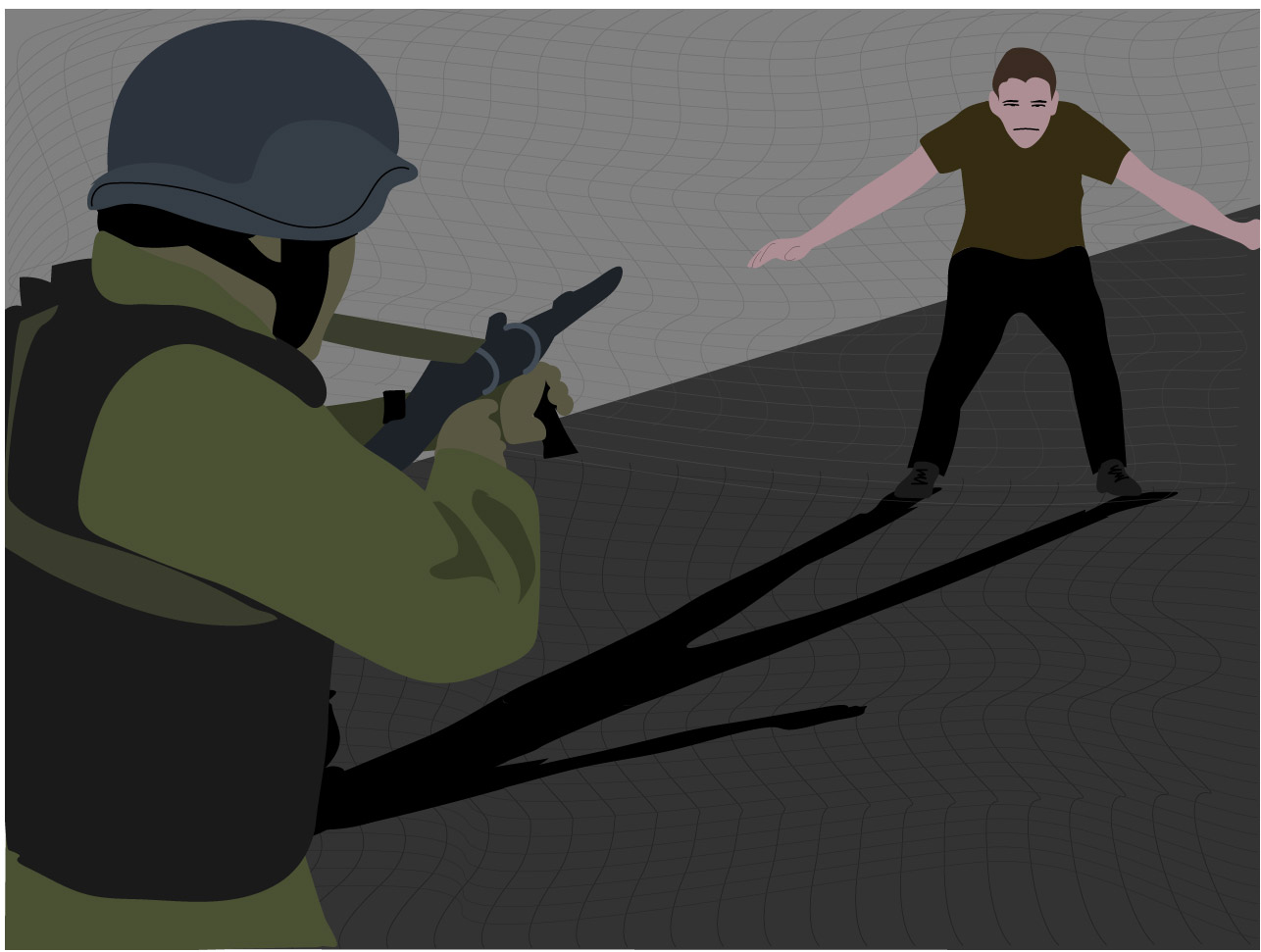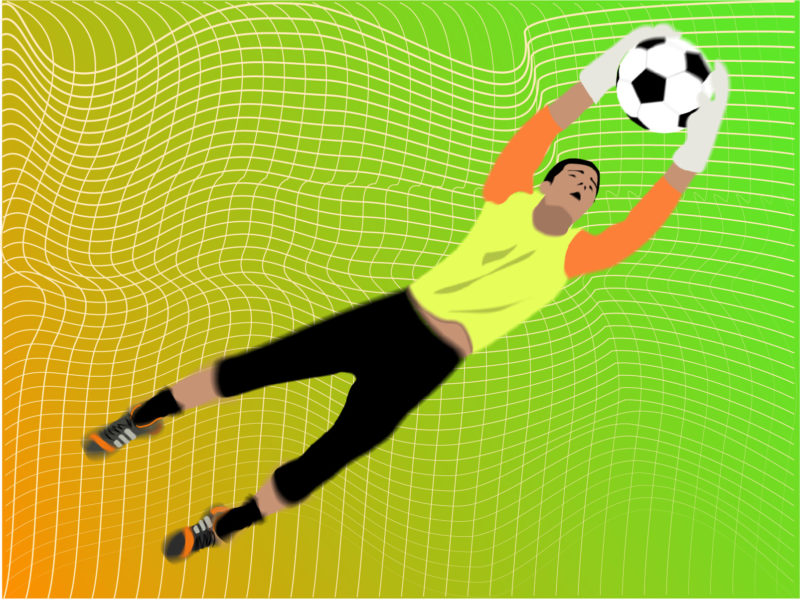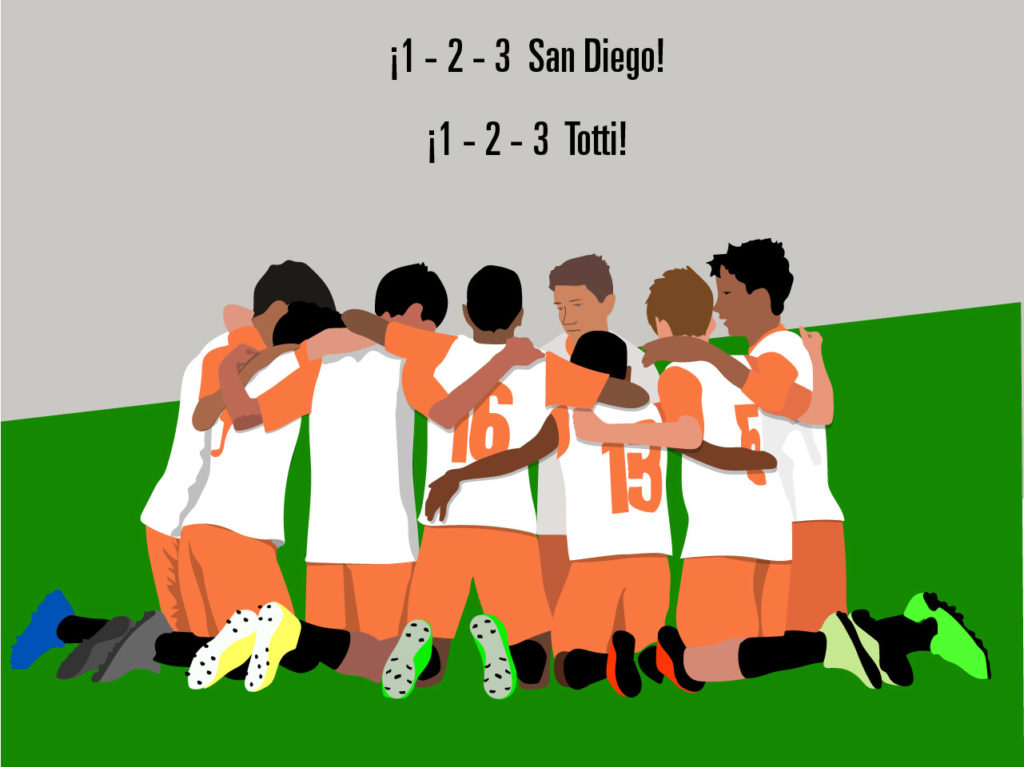

Luis Guillermo Espinoza, 15, was shot in the head during an opposition sit-in suppressed by the Bolivarian National Guard. The demonstration took place in San Diego (Carabobo) on June 5, 2017. After 74 days fighting for his life, he died of a respiratory arrest. Luis Guillermo played soccer since he was 8 years old, and he was the goalkeeper. He was an only child. His mother was a single mother. The novelist Federico Vegas recalls those events and speaks out about that inexplicable death. They were only children.


Jules Michelet said that “history is resurrection.” It’s very painful when you try to bring to life a 15 years old young man who has just began to live under the design of his own decisions, the fragile and astonished freedom that is adolescence.
The starting point is brief and diluted among news of hundreds of murders:
On the afternoon of Sunday August 13 (2017), Luis Guillermo Espinoza, a student at the Good Shepherd High School and for eight years a soccer player at the San Diego Soccer School was confirmed dead. Luis Guillermo was shot in the head during a demonstration against the government of Nicolás Maduro in El Tulipán neighborhood of San Diego, which was suppressed by members of the Bolivarian National Guard.
For 74 days he fought for his life. The diagnosis was not encouraging. “In the case of surviving, he will remain in a vegetative state,” said one of the treating doctors. However, with the days, Luis Guillermo was gaining strength and there was hope, but a second relapse took him back to intensive care and he died of a respiratory arrest.
The first step will be to make Luis Guillermo flesh of our flesh. Half a century ago he could have been my friend; a quarter of a century ago, my son. Today I am going to try to get closer to what a grandfather feels when his grandson is murdered. This is the resource with which I’m relying on to turn a young man I never met into a current loved one.
The second connection will be through soccer. I have seen my son and my grandson play in a field that seemed immense to them. My grandson changed it for basketball; my son is still playing what its called futsal and he enjoys it immensely.
Luis Guillermo was a great soccer player. I can sense it from his bearing, in his looks, in the fervor with which his teammates were there during his long agony. This solidarity occurs among those who seek a future together. They not only trained for the next game, but also for that future that we call “our destiny” and makes us so happy when we finally fulfill it.
Soccer players, as is often the case among athletes, are lucky enough to be able to measure their performances with quantifiable results. In soccer, the collective and the individual merge into the same result: win, lose or draw. The most specific and stimulating expression is the goal, which is why the center-forwards are usually so famous.
Luis Guillermo was not competing for that position, he was a goalkeeper, the counter-figure of those who seek a goal. Instead of looking for that, he was dedicated to avoiding it. His function was different from all of his team mates and he dressed with other colors. Most of the time he was alone under the archery contemplating what was happening at the other end of the field. A solitude and a peace that is always a good sign. One sportswriter said that goalkeepers have a surveyor’s glance. They certainly have the most complete perspective of the game. A synonym for netkeeper leads us to that destiny search that gives meaning to life: goalkeeper. Luis Guillermo was devoted to guard the goal for his team.
I love soccer. I played it until I became slow, dull. Thanks to my memories I am a fan who enjoys and suffers during matches with a love and hatred just as irrational. When a player runs with the ball I can feel -from the comfort of my sofa- the air racing in my lungs, my thighs burning, the decisions and doubts that stumble before the opponent.
About what a goalkeeper feels, I know very little. I never played under an archery. I did not live those moments when it is impossible to think, not even react, and it only works to let you get carried away by your own body, educated as a magnet that searches the trajectory of the ball to prevent it from going through. It is a skill that marks you for life. I remember now Peter Handke’s novel: The Goalkeeper’s Fear of the Penalty, taken to the cinema by Win Wenders.
To think that, because he was a goalkeeper, Luis Guillermo blocked the bullet from his teammates, it is an unpleasant, crude simile. But it makes sense if we observe the strategy and the weapons the opposing team plays with.
I will try to explain it.
The national guard and the Bolivarian supporters have been indoctrinated, armed and armored to fight against one of the most romantic manifestations that has occurred in the history of Venezuelan political confrontations. There is not a single image of the protests in our streets that does not instill courage, creativity, camaraderie, generosity and, at the same time, helplessness, madness, improvisation. The beauty of these expressions is so moving that President Maduro said that they are montages, staged by experts in war films. But the real explanation is that most of the protagonists are very young, minors, a good term to see the life that still lies ahead of them. They react to injustice in the purest and most genuine way. William Faulkner said: “When you have plenty of good strong hating you don’t need hope because the hating will be enough to nourish you.” There are young people capable of reversing that bleak equation: “When you have enough hope, you do not need hatred.”
The disparity of the confrontation has been extreme: means as prehistoric as a stone, facing weapons capable of killing even “accidentally,” as part of a system they call “proportional response,” this right proportion has killed more than 120 people in three months, a little more than one per day, a pace that the government considers reasonable and exemplary.

The information about what killed him has been conflicting. Some said it was a bullet, but also a “metra”, a glass pellet. The truth is that the boy died from a gunshot wound and is presumed that came from a national guard. The doctors who treated him said it was a bullet.
While a metra (or marble) is considered an “accident”, a bullet is “murder”, although the result is the same: Was ending Luis Guillermo’s life a mistake or a choice?
The novelist George Eliot wrote: ” Cruelty, like every other vice, requires no motive outside of itself; it only requires opportunity.” The team that stands by the Bolivarian National Guard’s insignia has plenty of opportunities. It is encouraged by a military leadership that offers them the opportunity to kill with impunity, as long as it is executed with an adequate and gradual proportion.
If you act in the name of an evil and corrupt government, and confront a demonstration that exhibits a brave joy in the face of danger, how do you exercise the opportunity to choose a victim? At the time of killing you tend to choose the most noble, the one who stands out, those beings who radiate an inexplicable attraction. It is a kind of “natural selection.” And it is in this sense that Luis Guillermo caught the killer projectile that went across his companions. His major drawback was that since his childhood he trained to block, not to dodge. It was not something he meant to do, but a drama that is in his nature, in his smile and a clear gaze, filled with hope and without a place for hatred.
From these circumstances arises a myth of heroism that concerns me. I feel a crushing apprehension when someone says that Luis Guillermo’s death had a meaning, a purpose. Certainly, the blood spilled in such a vile and unjust way opened the eyes to the world about the true nature of Maduro’s regime, but the death of a defenseless 15-year-old by a head shot at short range, will never make any sense.
Arguing emotionally his death when Venezuela seemed on the verge of massive reaction, or rejecting it with pity after the country’s situation calms down in a miserable servitude, is setting us aside from a harsh truth: denying Luis Guillermo knowing what would had become of him.

If we tell his life beginning from its end and moving towards, we could talk about a famous international soccer player; describe some of his unforgettable jumps under the archery, impossible and magical blockage, until his encounter with a national guard that afternoon in El Tulipán, in the state of Carabobo, at the center of Venezuela, where the story ends.
Only by exposing this tragedy taking out all political bias, we can witness the horror that will make us love and respect life.
Espinoza’s murder is one of two that happened at El Tulipán, a sector of San Diego, since the protests against the Maduro regime began. In both, eyewitnesses blame the National Guard troops. There is video evidence showing a man in military clothes shooting at close range. Nobody has been arrested.
How Can justice can be served? Real justice means that after being part of the protest, the next day Luis Guillermo could have been part of a game on equal terms and with a fair referee. Doing justice is not punishing injustice, but this being unconceivable. There is no possible compensation for a crime. When you take someone’s life, you took everything and there’s nothing you can do. Hence the need to feel horror before the death of someone.
Jules Michelet spoke of “The gift of tears” as a requirement to feel and be able to pass to others the life that is latent in all story, that mercy, that shudder that comes from putting yourself in the place of someone who is no longer among us. Two verses by Andrés Eloy Blanco explain it:
When you have a child,
you have all the children.”
An also:
All the anguish and all the hope.
That Sunday afternoon the news devasted family and friends: Luis Guillermo was dead. He was an only child. His mother was also his father. She was always there, at the foot of his bed.
It was difficult to get the mother to talk. She excused saying that she did not know how it all happened, she just wanted to talk about who Luis Guillermo was.

There is no greater pain for a mother, even regarding a hundred or thousand murders, than losing a child. I am now looking at a picture of Luis Guillermo with his mother in a playground surrounded by industrial sheds. They stand lonely on the open field cover with grass, everybody else has gone.
My God, how much they resemble each other! They have the same smile and the same eyes. Those of the mother lean slightly, as if trying to explain that she is not part of the team, even if she is wearing a medal on her chest while her son holds a trophy.
And it happens that they really made a good team. Both shared thousands of breakfasts, lunches and dinners, fevers, joys, scolding and kisses on the forehead.
When a journalist interviews her after her son’s death, she tries to be rational, balanced, even when she is the one who asks the questions:
-Isn’t obvious that his face shows he was still a child. How someone was able to shoot him? Why to the head?
Her words are interwoven with other mother’s testimonies, colleagues from other teams, teachers from other schools who ask the same questions. The journalists are the story drifters and they are carried away by the wave of murders of teenagers until another wave comes and the previous story is being left behind, without any possibility of redemption or resurrection.
The mother returns home and, now alone, feels the weight of becoming again a team of one. At her home, Luis Guillermo is alive. Only she carries the burden, the gift of tears.
We have to stop, support her, watch the picture where she is with her son at a grass field, until Luis Guillermo emerges in our interior and then no longer knowing:
If the pain is hers or if the blood is ours.
Investigation of Heberlizeth González.
Translation: Josefina Blanco


This story is part of the series They were only children, developed in partnership with the Community Learning Center (Cecodap) and the support of El Pitazo.
1841 readings
I was born in 1950, which means that I am already half a century old and that it’s easy for me to do the math of things. As a kid, I was a writer. Later on in life, I became an architect, but then I started to write again. Now, I wish I could paint on huge canvases that would force me to move around like an athlete. That way, I’d be exercising and creating at the same time, instead of just sitting down and writing with two fingers, which is what I do now.